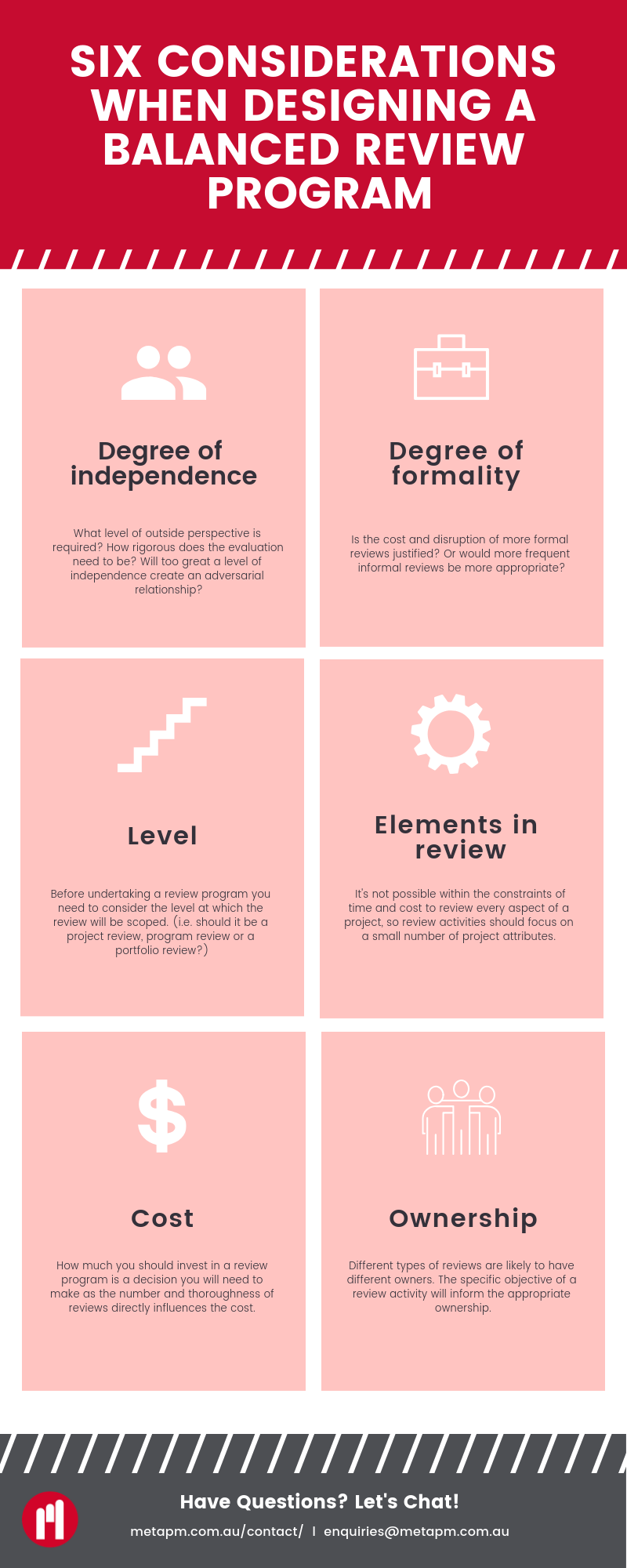When looking to design a balanced project review, there are many different types of reviews, that could be undertaken, however, a project will not necessarily require all these reviews. When setting up a program of reviews, a mixture of different approaches should be considered for use across the portfolio of projects.

When designing a balanced project review program, the following considerations should be taken into account:
- Degree of independence
What level of outside perspective is required? How rigorous does the evaluation need to be? Will too great a level of independence create an adversarial relationship? How long will it take an external reviewer to get up to speed? Will peer reviewers have the time/distance to see common failure modes? Will a self-assessment be of sufficient value to the project team?
- Degree of formality
Is the cost and disruption of more formal reviews justified? Would more frequent informal reviews be more appropriate?
- Elements of the review
It’s not possible within the constraints of time and cost to review every aspect of a project, so review activities should focus on a small number of project attributes. Will the review consider project objectives and/or alignment to organisational objectives? Is the status of project progress against baselines relevant? Should there be a focus on risk? Is quality a project dimension that should be included in the review? Should the review focus on processes or products? Or both? Is compliance with organisational policies, standards, and processes something that should be included?
- Level [Symbol] At what level will the review be scoped? Will it be a project review or a program review? Or, should it be a portfolio review. The level of the review will help determine the depth of the review, the attributes being focussed on and the amount of effort needed.
- Cost
The number of reviews performed, and the thoroughness of the review directly influence the cost of your review program. How much you should invest in a review program is a decision you will need to make based on considerations of risk and criticality.
- Ownership
The different types of reviews selected are likely to have different owners. There may be reviews conducted by the project manager, while the project board/steering committee might use the services of a project assurance team. Alternatively, depending on the delivery approach there might be a stronger emphasis on peer review.
View our Project Assurance Considerations Infographic below:

Want to find out more about Project Reviews? Contact us today on enquiries@metapm.com.au or give us a call on 1800 80 436.



